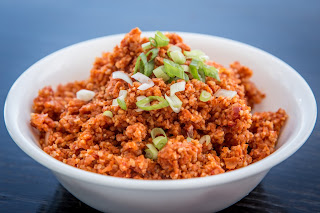Armenian-Lebanese cultural link
Mark Azadian
Based on what I have learned from the differences and similarities of both the Lebanese and Armenian cultures is that both have a historical context, in Lebanon, you have the Phoenicians, the Romans, the Egyptians, the Persians, Greeks and many others that have all ruled Lebanese lands once. While in Armenia, there used to be the Armenian Kingdom, Roman Empire, Byzantinian Empire, Ottomans and many other. This produced many historical landmarks that were left by these cultures, for example in Lebanon you have Byblos which was once a Phoenician city, or the ancient town of Baalbek (temple of Bacchus built by the Romans), or the famous city Sidon; constructed by the Phoenicians and used as a commercial port. While in Armenia we can also find historical landmarks left by the past rulers of its lands, for example, we have the famous Areni 1 cave that was inhabited during 5000 B.C. or Etchmiadzin; one of the world's first churches, that was built in 303A.D., or temples that were left by the pagan Romans like Garni temple and medieval forts left by the predecessors. Both cultures are rich with history and full of diversity.
Lebanese Landmarks:
Byblos Citadel:
https://fr.wikipedia.org/wiki/Château_de_Byblos Sidon:
http://looklex.com/e.o/sayda.htm
Armenian Landmarks:
Etchmiadzin:
https://en.wikipedia.org/wiki/Etchmiadzin_Cathedral Garni Temple:
https://en.wikipedia.org/wiki/Temple_of_Garni
The tasty side of both cultures:
Whereas when it comes to each culture's tradition, there are a couple of differences, for example, the food in Armenia is a bit different than Lebanese food, but due to both countries being neighbors and linked together both traditional cuisines can be found in each country. In Lebanon, you can find Armenian food like Mante, Soubereg, Harissa, Dolma, Eetch and the great Basterma, while in Armenia you can also find Lebanese food such as Hammous, Taboulleh, Kebbeh nayyeh, Shawarma and much other fantastic cuisines. This link in both kitchens shows how close to each other these two cultures are, the interaction of both cultures working together and also in a way communicating.
Armenian Cuisine:
Mante:
https://www.pinterest.com/explore/armenian-food/ Eetch:
http://mamajoun.com/menu/
Soubereg:

Lebanese Cuisine:
Shawarma:
http://www.shawarma-king.ca Tabbouleh:
http://www.seriouseats.com/recipes/2015/06/tabbouleh-salad-recipe.html
Hammous:
http://www.abshar.ae/index.php?pageid=menu

European lifestyle or middle-eastern?:
When you travel to Yerevan and walk in Yerevan's streets, it feels like you are in Europe or in a western urban city. The same goes for when walking down in the streets of downtown Beirut, it makes you feel like you are in a European country even though they are situated in the middle east.
As for daily clothing, both have western clothing when it comes to everyday clothing, for example, jeans, polos, sweatpants, shirts and many other.
The harmonious side of both cultures:
When it comes to differences between these two cultures the first thing that comes mind is the music each culture has. Lebanese music is based on Arabic lyrics and similar to other Arabic songs found in other Arab countries. Some famous Lebanese singers: Fayrouz, Sabah, Nancy Ajram, Wael Kfoury, even Mika and many other singers. Some famous Armenian singers: Charles Aznavour, Serj Tankian, Andranik Madadian and many others. Armenian are also known to be prone to instruments and composers, for example, Aram Khatchatourian who is known to be a famous soviet classical music composer, the Band System of a Down who is famous for composing rock music and each of its members are Armenians, Alexandre Spendarian another famous classical music composer and many others. This trend in Armenia of classical music composers came during the time under the regime of the Soviet Union which encouraged this to happen.
Links for images:
https://fr.wikipedia.org/wiki/Château_de_Byblos
http://looklex.com/e.o/sayda.htm
https://en.wikipedia.org/wiki/Etchmiadzin_Cathedral
https://en.wikipedia.org/wiki/Temple_of_Garni
https://www.pinterest.com/explore/armenian-food/
http://mamajoun.com/menu/
http://www.abshar.ae/index.php?pageid=menu
http://www.shawarma-king.ca
http://www.seriouseats.com/recipes/2015/06/tabbouleh-salad-recipe.html








Comments
Post a Comment